#Neolithic Statues
Text
Amman Citadel and Temple of Hercules Ruins Amman Jordan
Umayyad Palace Mosque
Amman Citadel is an impressive open-air archaeological complex and a must-see for anyone visiting Amman. I didn’t realize that there were several significant landmarks at the site. It’s located on the highest hilltop in Amman – Jabal Al Qala’a – one of the seven hills (jabals) that originally made-up Amman.
Umayyad Palace Mosque Dome
Evidence suggests that the area has been…

View On WordPress
#6th Century Byzantine Church#Ain Ghazal Statues#Amman Citadel#Amman Jordan Seven Hills#Ancient City of Ammonites#Aramaic Characters#Babylonians#Bedouins#Bronze Age#Byzantines#Dead Sea Bronze Scroll#Jabal Al Qala&039;a#Jordan Archaeological Museum#Jordan Valley#Neolithic Period#Neolithic Statues#Persian-Style Apadana Hall#Ptolemies#Rabbath Ammon#Roman Emperor Marcus Aurelius#Roman Temple of Hercules#Roman Theater Amman#Romans#Seleucids#Temple of Hercules Ruins Amman Jordan#Umayyad Dynasty#Umayyad Mosque#Umayyad Palace#Umayyad Palace Domed Audience Hall#Umayyad Palace Mosque
0 notes
Text
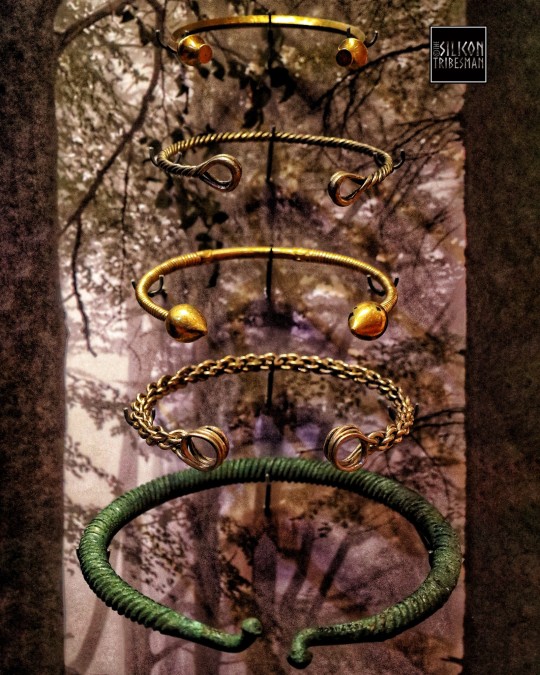

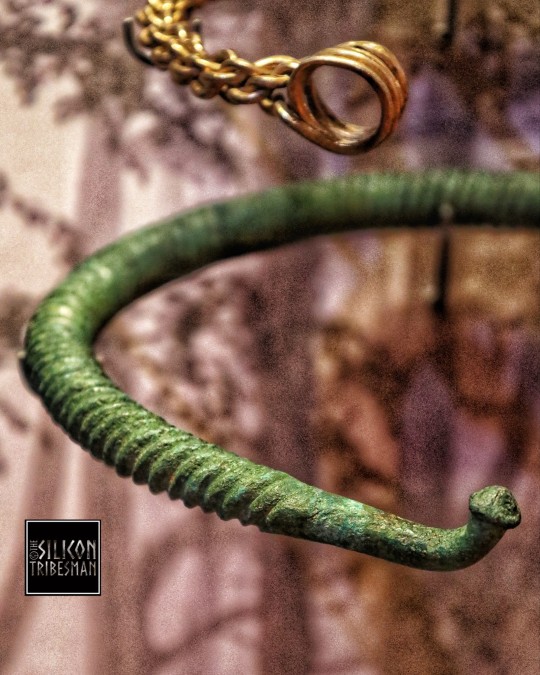


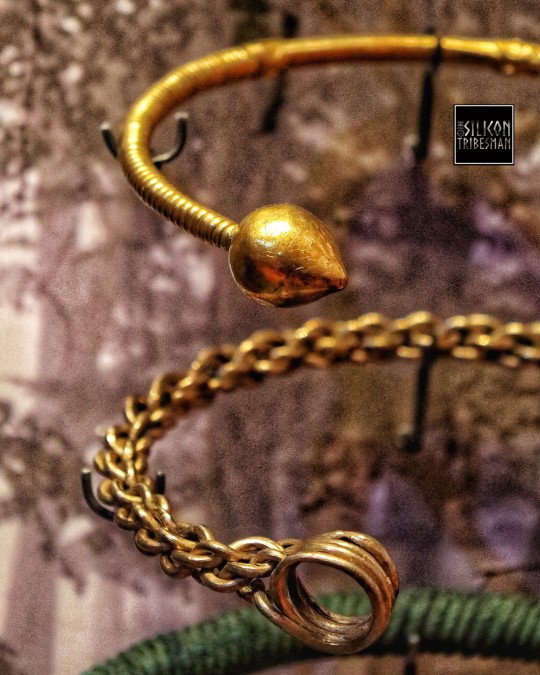

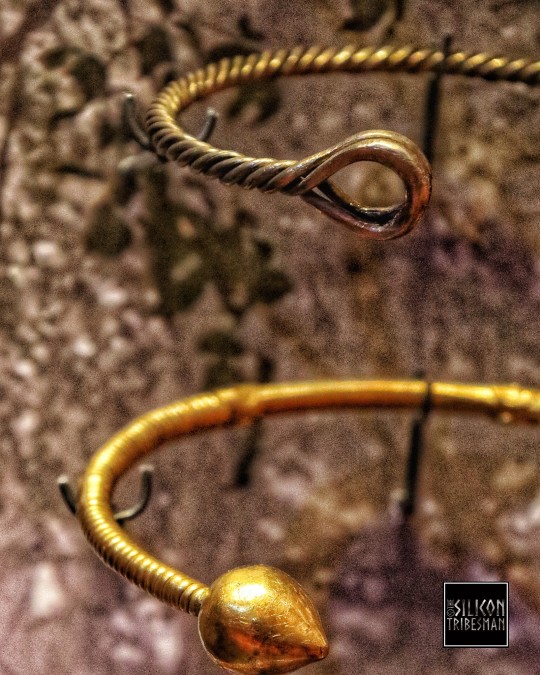
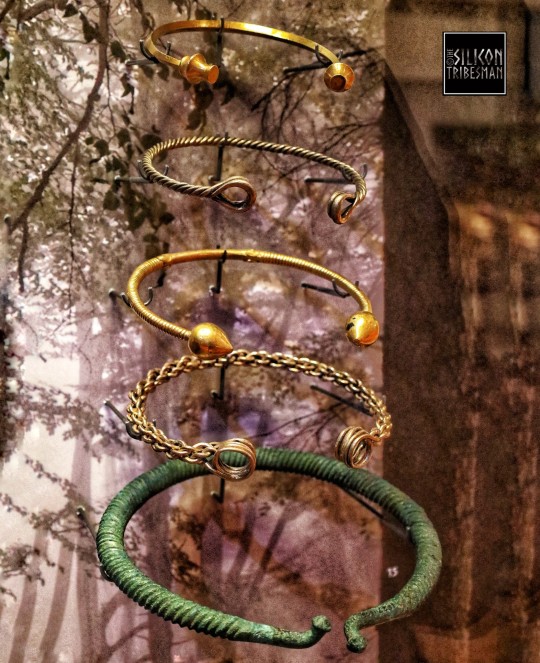
Iron Age Gold and Bronze Torc Selection, Ashmolean Museum, Oxford
#ice age#stone age#bronze age#iron age#copper age#neolithic#prehistoric#prehistory#mesolithic#paleolithic#archaeology#calcholithic#torc#metalwork#jewellery#status#ancient living#ancient craft#ancient cultures#ashmolean museum
141 notes
·
View notes
Text
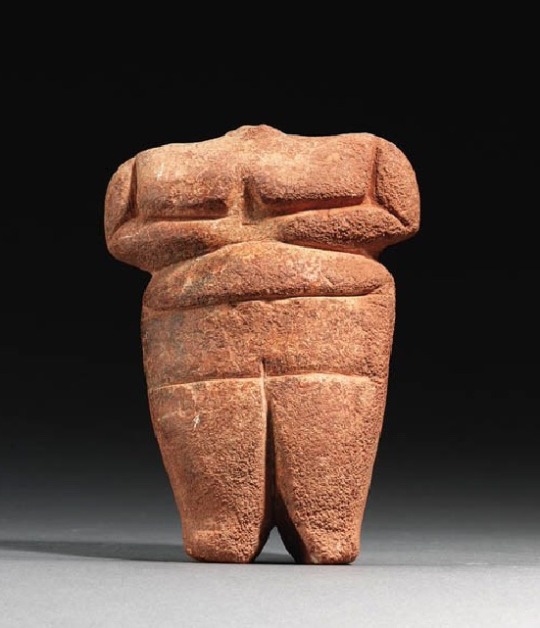
A NEOLITHIC MARBLE FEMALE FIGURE
THESSALY, CIRCA 4500-4000 B.C.
The corpulent figure with her arms crossed below her breasts, the bulging midrift offset from the flattened waist by an incised groove, standing with her feet apart, her legs divided by a deep cleft.
5 in. (14.6 cm) high
#A NEOLITHIC MARBLE FEMALE FIGURE#CIRCA 4500-4000 B.C.#marble#marble statue#marble sculpture#ancient greek sculpture#ancient artifacts#archeology#archeolgst#history#history news#ancient history#ancient culture#ancient civilizations#ancient greece#greek history#greek art
123 notes
·
View notes
Text
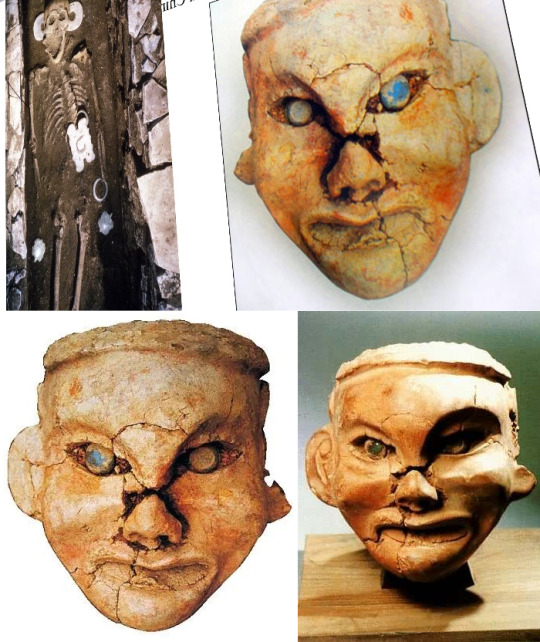


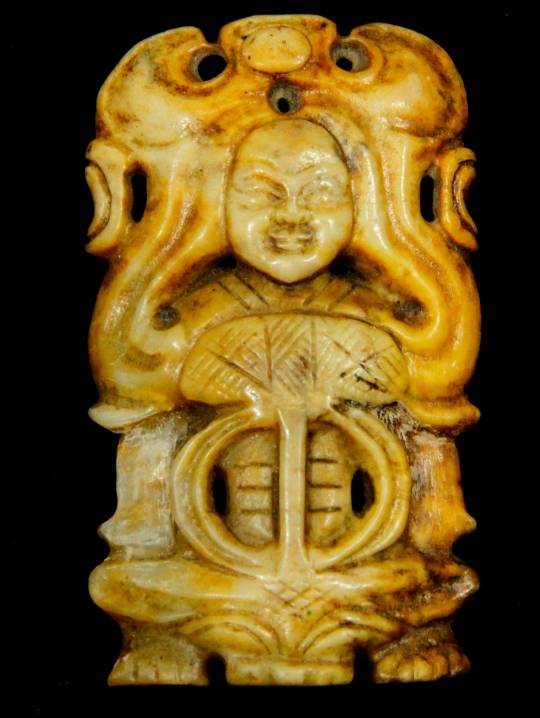


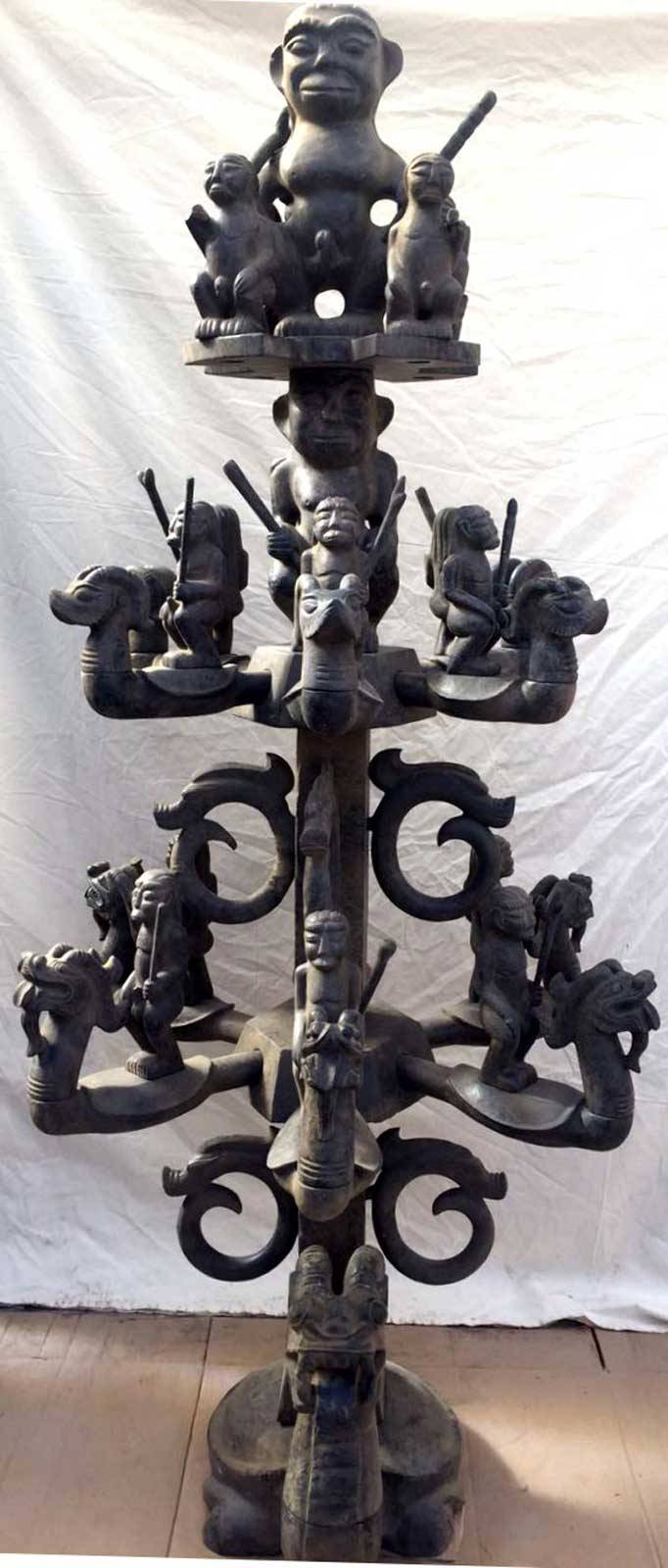

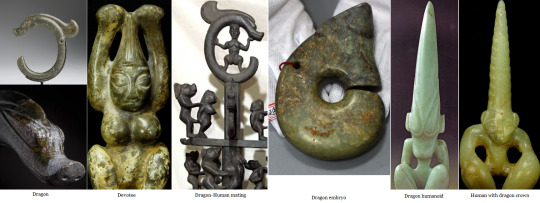



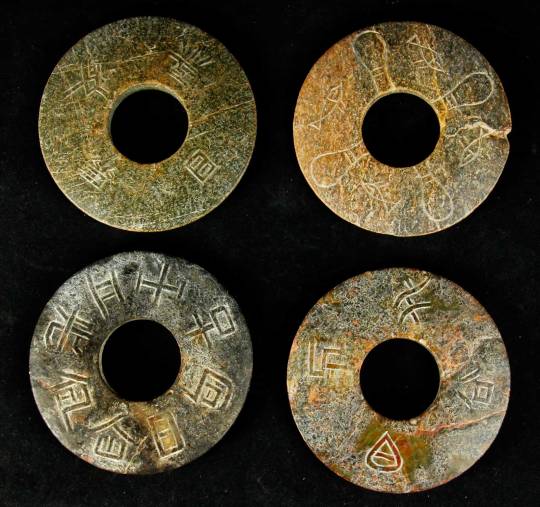




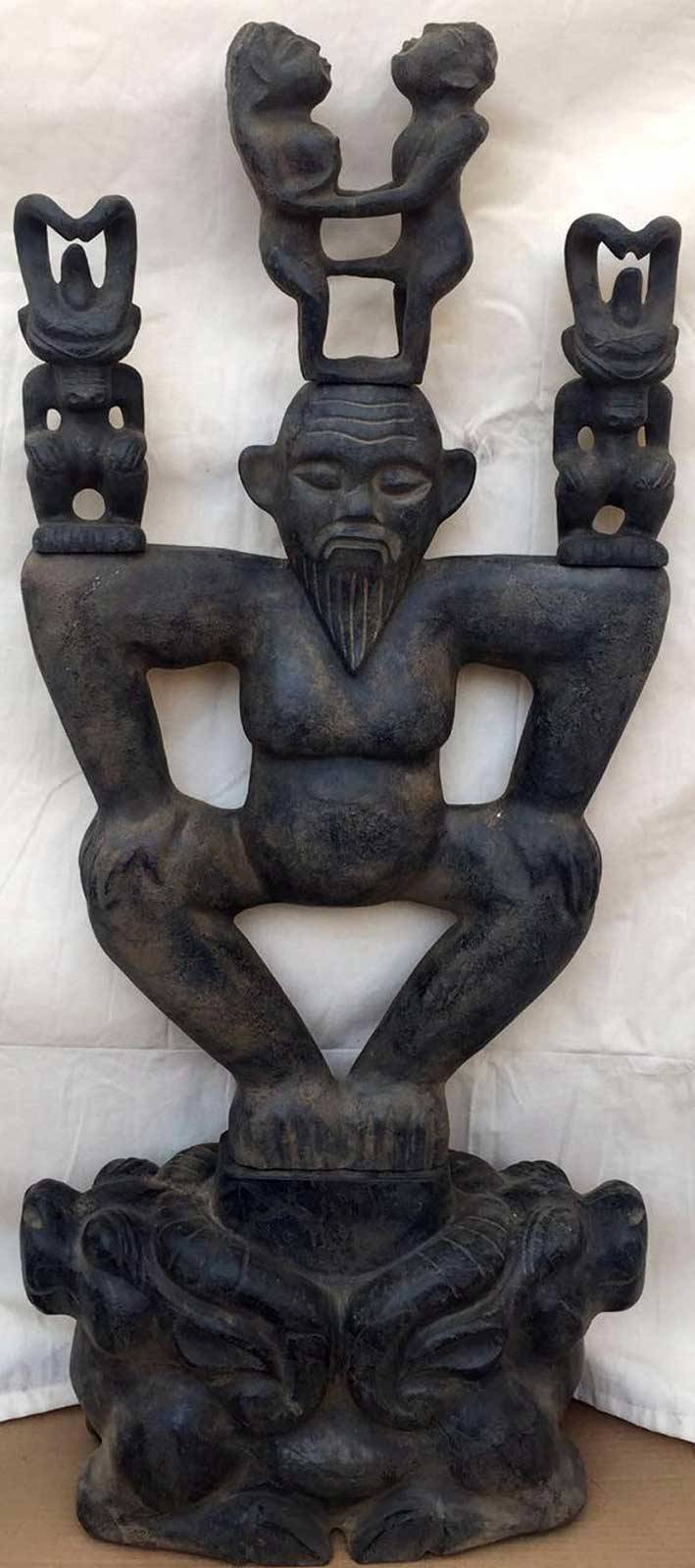

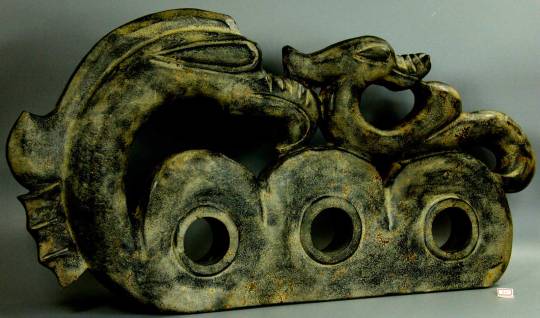
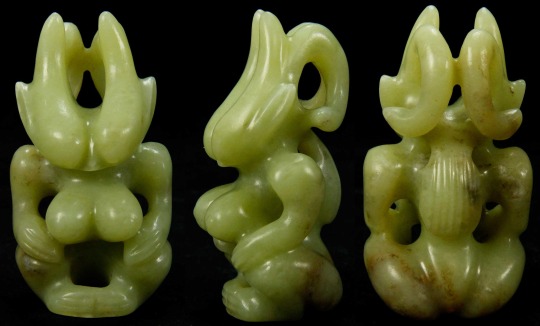






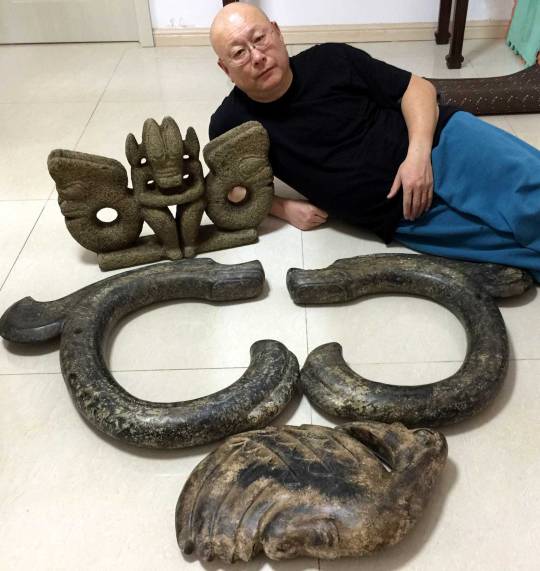

Neolithic Hongshan Culture 4700 to 2900 BCE
I'm just going to do a summary post on all these Hongshan artworks here. Hongshan seems to have artwork depicting both Caucasoid and Mongoloid people. One of them has large, deep-set blue jade eyes and doesn't look anything like modern day Chinese people. However, there are also a lot of figures that do look like modern day Chinese people. It would seem there was a variety of different people living in the area. There are also a large variety of depictions of dragons and what appear to be dragon-human hybrids, as well as dragon embryos. Some statues appear to show mating between humans and dragons or other creatures. It's possible these statues tell stories of humans claiming to be descended from dragons. See my other Hongshan post (Dragon of the Hongshan Culture 4500-3000 BCE) for more info on genetic curiosities.
More images on my blog: https://paganimagevault.blogspot.com/2023/08/neolithic-hongshan-culture-4700-to-2900.html
#chinese history#dragons#ancient history#history#anthropology#art#statue#ancient art#archaeology#neolithic
99 notes
·
View notes
Text
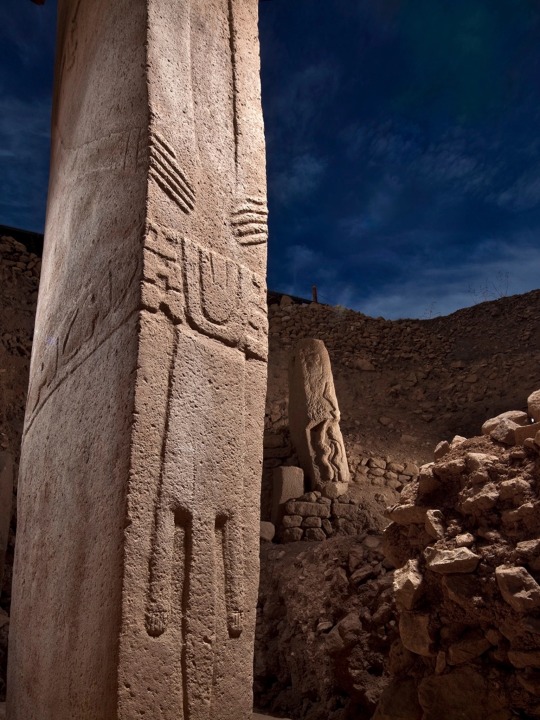
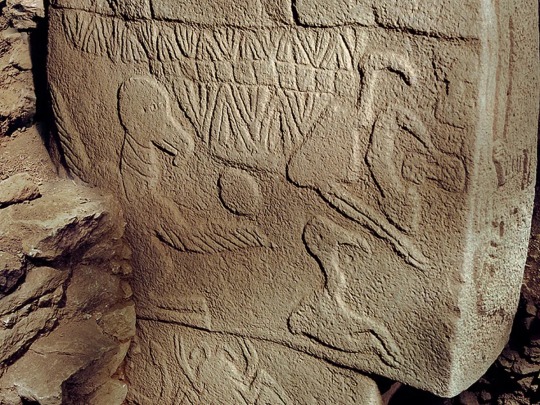
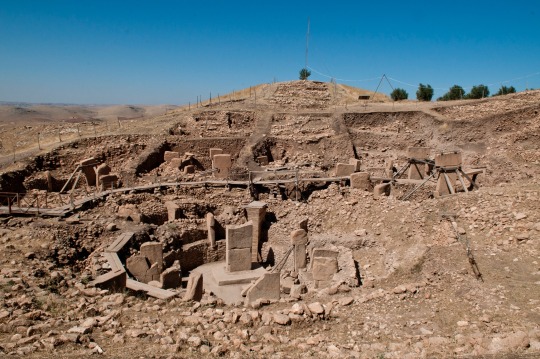
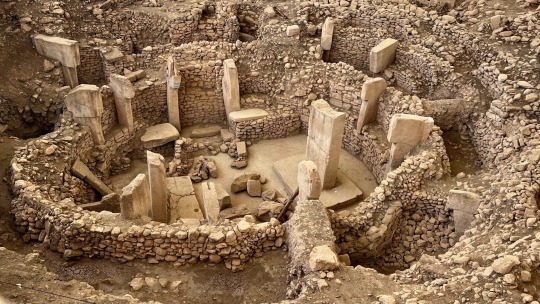
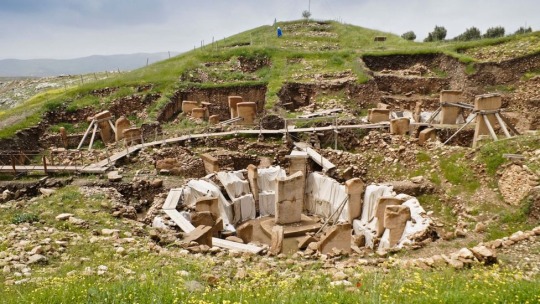
Göbekli Tepe (known as Girê Mirazan or Xirabreskê in Kurdish)
A neolithic settlement in modern day Southeastern Anatolia Region, Turkey
Older than stonehenge, this settlement is thought to have been inhabited from 9500 to 8000 BCE.
Popularly known to include the oldest known temple, it is famous for large circular structures containing massive stone pillars decorated with anthropomorphic details, clothing, and reliefs of wild animals that are said to give archaeologists insight into prehistoric religion.
#art#archaeology#ancient#turkey#stone sculpture#stone statue#neolithic#ruins#natural stone#stone art#prehistoric#ancient egypt#ancient ruins#ancient art
40 notes
·
View notes
Text
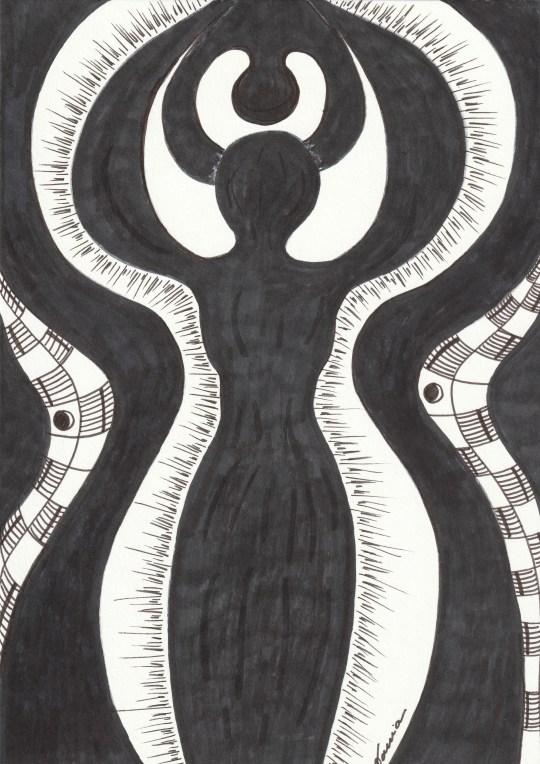
#drawing#drawdaily#hand drawn#my draws#drawdrawdraw#painting#manga art#design#statue#neolithic#art#artwork#artists on tumblr#female artists#deesse
2 notes
·
View notes
Text
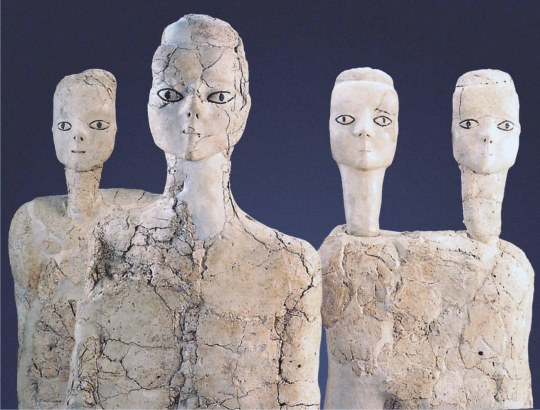
FIGURE UMANE IN PIEDI: questi busti sono stati ritrovati nell'attuale Giordania e risalgono al 9000-7000 a.C.. Il materiale utilizzato è una malta, creata con il calcare sbriciolato, posizionata su uno scheletro di rami e canne.
0 notes
Text


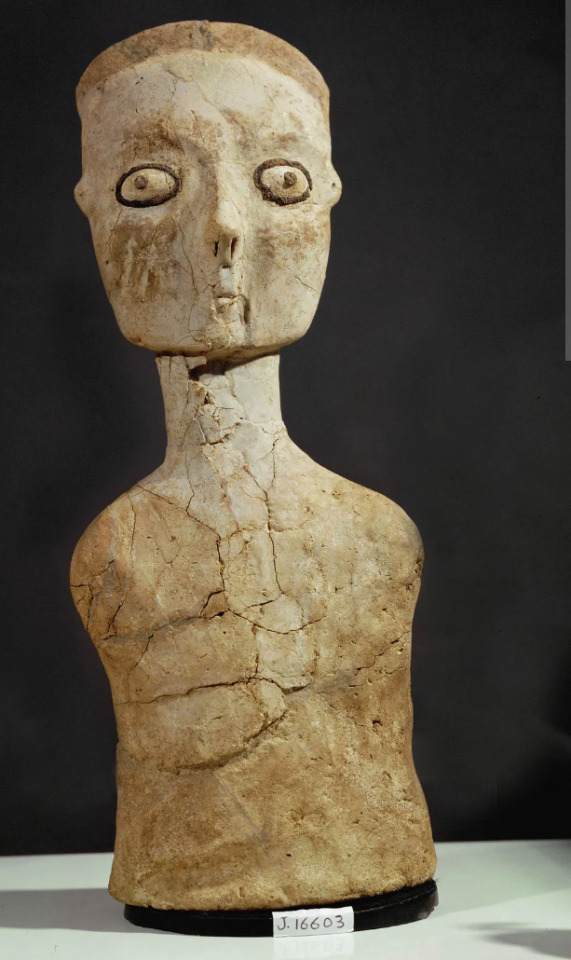
AUTORE: Anonimo NOME DELL'OPERA: Figure umane in piedi DATA: VIII-VII millennio a.C. PERIODO: Neolitico COLLOCAZIONE: Ain Ghazal, Giordania TECNICA: Busti antropomorfi modellati con una malta formata da calcare sbriciolato su uno scheletro di canne e rami tenuti insieme da una cordicella FUNZIONE ORIGINALE: Probabilmente sono stati sepolti subito dopo la realizzazione, essendo stati realizzati per quell'intento COLLOCAZIONE ATTUALE: Museo della Giordania
0 notes
Text
Aha! That statue is from the Vinča culture of Eastern Europe—you’d know it anywhere! Protruding almond-shaped eyes, the nose elongated until it almost forms a muzzle, posed with short, stylized arms held stiffly out to the sides…yep, classic Vinča. (Assuming 7000 years old is “classic.” Might be “vintage.” Or “heirloom,” you can’t remember.)
You can’t tell off hand if the statue is a genuine Neolithic artifact or just a good reproduction. It’s pretty well intact though, made of terracotta and stands about eight inches high. Appears to be female, with two small holes punched in each arm. Like much Vinča art, it manages to be both alien and expressive.
Nobody’s ever worked out the Vinča writing system, so nobody knows if the figures are gods, goddesses, rulers, ancestors, or the local equivalent of Barbie dolls. “Possible Ritual Significance” is archaeologist slang for “dunno, looks important.”
Apparently this one is considered of possible ritual significance in the labyrinth, because small offerings have been left in the niche at its nonexistent feet. You see withered flowers, a small dried fish, and a dozen coins, only some of which you recognize.
One of the coins you don’t recognize is triangular and very thin. You suspect that you could use a corner to wind up the clockwork bee.
Of course, that would involve taking an offering from what might be a goddess…
562 notes
·
View notes
Text
Today is World Heritage Day
Oiginally known as the International Monuments and Sites Da it is a global celebration of this planet’s heritage. It’s all about increasing the awareness of the importance of the diversity of cultural and natural heritage and preserving this heritage for future generations..
In Scotland we’re lucky enough to have no less than six UNESCO World Heritage Sites. they are;
St Kilda.
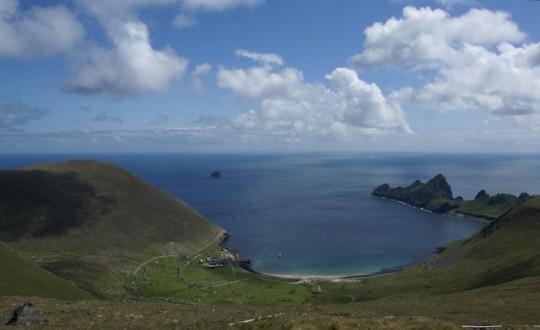
The remote Hebridean island archipelago is one of only two-dozen global locations with World Heritage Status for both natural and cultural significance.
The archipelago shares this honour with natural and cultural wonders such as the Historic Sanctuary of Machu Picchu in Peru and Mount Athos in Greece.
I'd love to visit, but it is a wee bit too expensive for me.
Edinburgh Old and New Towns.

Some people have asked me which part of Edinburgh is covered by this title, well the simple answer is all of it!
The capital is a city of many eras, and its World Heritage Site comprises both the old and new towns. The Auld Toon has preserved much of its medieval street plan and Reformation-era buildings along the wynds of the Royal Mile.
The (relatively) New town contrasts this perfectly with neoclassical and Georgian architecture in regimented order.
Antonine Wall.

I've explored many parts of the wall. Constructed around 142 AD by the Romans, the Antonine Wall marked the north-west frontier of their empire. Stretching from the Firth of Forth and the Firth of Clyde, the Antonine Wall separated the civilised Romans from the wild Caledonians.
The Heart of Neolithic Orkney
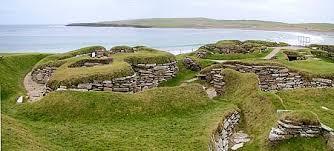
I've not visited The Northen Isles as yet, plans were in the early stages to go this year, but my friend ended up in hospita and is still recuprating, hopefully we can get something sorted when she becomes more able.
The Orkney mainland is synonymous with archaeology. It boasts the mysterious standing stones at the Ring of Brodgar and megaliths at Standing Stones of Stenness, as well as the 5,000-year-old settlement of Skara Brae and chambered cairn and passage grave of Maeshowe. Together these four sites form the heart of Neolithic Orkney, which was given World Heritage status in 1999.
The Forth Bridge

I remember as a bairn drawing and painting the bridge with a steam train going over it, but the train going over the "bumps!"
One of our most iconic and beloved bridges, the Forth Bridge was named a World Heritage Site in 2015 just after its 125th anniversary. The bridge was one of the most ambitious projects of its kind ever attempted at the time. When it opened it had the longest single cantilever bridge span in the world.
New Lanark
The last mill closed in the 1960s but a restoration programme saved the 18th-century village from falling into dilapidation.
It is an early example of utopian socialism in Scotland as well as a planned settlement – making New Lanark an important milestone in the historical development of urban planning. I have never visited, I must say I much prefer my ruined castles and abbeys.
110 notes
·
View notes
Text
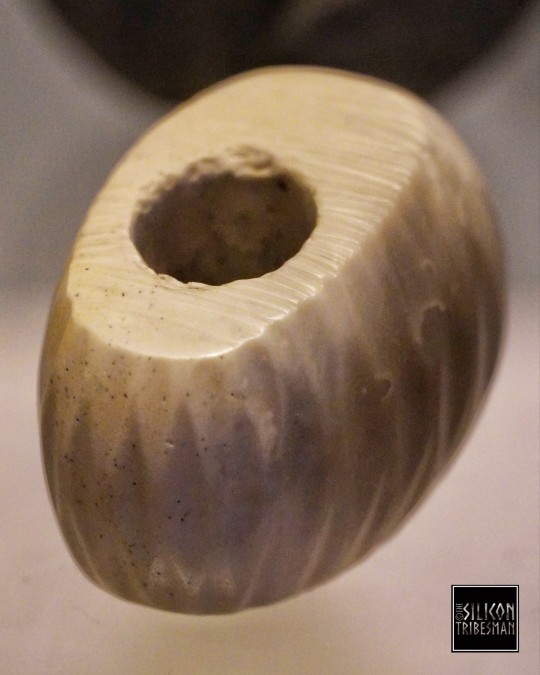
Decorated Flint Macehead, 3000BCE, The National Museum of Scotland, Edinburgh
#ice age#stone age#bronze age#copper age#iron age#archaeology#prehistoric#neolithic#mesolithic#paleolithic#calcholithic#relic#stonework#stone carving#status#prehistory#ancient craft#ancient cultures#Scotland#Edinburgh
128 notes
·
View notes
Text
Let's delve into the intricacies of an Omegaverse society, drawing insights from both biology and evolution. As a social science student myself with a background in anthropology, I aim to explore various aspects of this complex world, including its prison system, bathroom arrangements, treatment of the transgender community, societal norms, stigmas, reproduction dynamics, birth rates, and even the portrayal of sexuality through pornography.
Collaborating with my best friend, a medical student well-versed in anatomy, we've pooled our knowledge to shed light on how such a society might function, drawing parallels and extrapolating from existing data in our world.

So. Within the Omegaverse, there exist two overarching categories, male and female, each subdivided into three distinct statuses: Alpha, Beta, and Omega. Over time, the majority of individuals have transitioned beyond the Alpha and Omega distinctions, akin to how the human female body evolved past its reproductive heat cycles during the paleolithic period, marking a pivotal moment in human evolution.
In the distant past, during the age, Alpha males and Alpha females coexisted alongside their counterparts, Omega males and Omega females. The differences between Alpha males and females were minimal, much like the similarities between the two Omega sexes. However, there still were differences in genitalia where only Alpha females and Omega males displayed intersex characteristics. The enlarged clitoris of an Alpha female, resembling but distinct from a penis, possessed a knot—a feature absent in Alpha males— because of it's inability to produce sperm which necessitated an evolutionary adaptation towards a larger knot, in order to increase the chances of pregnancy.

Like stated before, the transition into a largely Beta population occurred even before the neolithic era, resulting into a similar contemporary societal structure as we know today. However, there being secondary genders didn't stop the historical oppression of all women. Only now it extended to impact Omega males, though they can pass as Betas if their genitalia remains private. Contrary to popular beliefs, there is no discernible scent associated with Omegas in heat; instead, it is their aura and demeanor that undergo noticeable changes. A "sex appeal", if you will, that affects everyone except Beta women for a vast number of reasons i'll touch upon later.

Legal frameworks exists to address non-consensual interactions with Omegas in heat, and sometimes even with Alphas in ruts. Statistical data still reflects a disproportionate involvement of Alpha and Beta males in such crimes.
In cases of rape involving an Omega in heat, the perpetrator might exploit societal biases to justify their actions or even escape punishment altogether. They might argue that the Omega's biological state somehow diminished the severity of the crime.
Similarly, in cases of rape involving an Alpha in rut, the legal system might downplay the seriousness of the offense due to the perceived status and power of the victim over the perpetrator.
In such a society, power dynamics based on genetic status and gender could heavily influence the legal process as well. Despite the vulnerability of Omegas in heat and the potential vulnerability of Alphas in rut, the legal system might consider it an extenuating circumstance for the aggressor.
In the Alpha Beta Omega prison system, inmates are segregated based on their genetic status and gender to ensure safety and maintain social order. Alpha males and Alpha females, Beta males and Beta females & Omega males and Omega females are all housed in separate facilities due to the perceived risks associated with mixing different genetic statuses and genders.
This segregation is justified by concerns for safety, as it is believed that males, regardless of their secondary gender, have the potential to overpower females. By separating inmates in this manner, authorities aim to mitigate the risks of violence and maintain control within the prison environment.

Alphas and Omegas are not exceedingly rare, but they remain somewhat uncommon, often noted and remembered as peculiarities. Their presence evokes a similar level of curiosity as encountering a left-handed person or a natural redhead—an intriguing aspect of diversity that captures attention but is ultimately regarded with a level of casual interest.
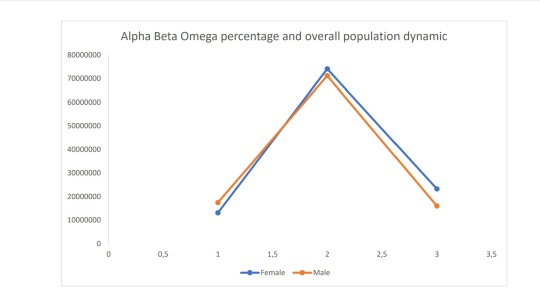
Second out of three parts coming right up, Tumblr won't let me post more images !
Also stay tuned, next part is gonna include a list of the Batfam members who I think are Omegas
#somone please shut my 🤓👆🏾 ass up#a/b/o dynamics#a/b/o au#alpha beta omega#batfam#batman comics#batman#jason todd#tim drake#clois#clark kent#stephanie brown#duke thomas#signal
57 notes
·
View notes
Text
time periods in human history according to tumblr:
Neolithic: also called "prehistory". This is where human history starts. Covers the time period from early hominids to the collapse of the roman empire. If you're an intellectual smart guy, you also know of "Antiquity", which is when they invented marble statues (hey did you know those were painted like theme park mascots?)
Middle ages, also called the medieval period. Lasted to roughly the industrial revolution. Kings and knights. Also witch hunts. The reformation? lots of wars, some only 30 years, some 100 years, that's crazy! Not colonialism tho, that's it's own thing.
Victorian era: This is the colonialism time! The USA is founded & everyone knows that's when history really begins. Lasted until approximately 1941
Modern era: starts with World War II and seems to be still ongoing idk
#sorry for being bitchy#don't get me started on art history#y'all have no idea what the renaissance is#(present company of course excluded everyone who follows me is very smart and very sexy <3)
212 notes
·
View notes
Text
The wonderous Nesshenge, is a replica of a Neolithic henge standing proudly in Merseyside's Ness Botanic Gardens. Built with meticulous detail provided by Dr John Hill, and serving as a captivating archaeological experiment, it's a testament to ancient ingenuity surviving through the ages.
From its humble beginnings as a research project to its current status as an educational landmark, it's a journey through time. Here Dr Hill returns to the site to see how the modern replica has matured over the last 15 years.
21 notes
·
View notes
Photo

Dolmens of Ancient Korea
Dolmens (in Korean: koindol or chisongmyo) are simple structures made of monolithic stones erected during the late Neolithic period or Korean Bronze Age (1st millennium BCE). In ancient Korea they appear most often near villages and the archaeological finds buried within them imply that they were constructed as tombs for elite members of the community. Over 200,000 megalithic structures have been recorded in Korea with 90% of them in South Korea where they have the status of protected monuments. Most of the stones used are massive with the largest example found being 5.5 metres wide and 7.1 metres tall, and many weigh over 70 tons.
Continue reading...
#Bronze_Age#Carnac#dolmen#Korea#Korean_Architecture#Locmariaquer#Long_Barrow#Menhir#Neolithic#Tracker_Korea#history
177 notes
·
View notes
Text



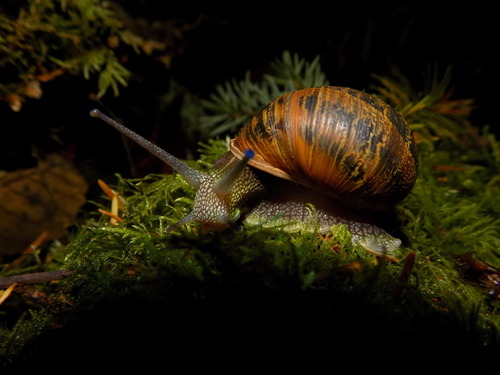
Life in the Slow Lane: The Brown Garden Snail
Perhaps the most widely known member of the mollusk group, the brown garden snail (Cornu aspersum), also known as the European garden snail, is native to the Mediterranean region of southern Europe and northern Africa, and his since spread to every continent except Antarctica. It thrives in temperate zones, particularly in open forests, coastal dunes, and urban parks and agricultural spaces. This spread has largely been facilitated by humans, and may have started as early as the Neolithic era nearly 8500 years ago.
The brown garden snail's name is an excellent descriptor of the species; both the body and the shell are mainly shades of brown. Generally the body is lighter than the shell, and secretes a thin layer of mucus to keep itself moist. The shell is about 2.5 to 4 cm (0.98-1.57 in) wide, while the body itself is roughly 5-9 cm (1.97-3.54 in) long. Body and shell combined, C. aspersum only weighs 15g (0.53 oz) at maximum. The body is made of two parts; the head, which carries the eye stalks, mouth, and sensory tentacles; and the foot, essentially a large muscle which the snail uses to move from place to place. The rest of its organs, including the heart, lungs, stomach, and anus are contained within the shell itself. Only the genital pore, located on the side of the foot, is exposed.
C. aspersum is primarily an herbivore, feeding on leaves, flowers, and fruits, as well as rotting plant and animal matter. In order to obtain the calcium it needs to build and maintain its shell, the European garden snail also occasionally consumes soil. Because of its slow nature, reaching a maximum of only 2.4 mm/s (0.09 in/s), this species is a common food item for other predatory snails, centipedes, glow worms, small mammals, lizards, frogs, and birds. However, the brown garden snail is able to retreat into its shell and produce a thick, frothy mucus membrane when threatened.
Like other terrestrial mollusks, the European garden snail is a hermaphroditic species, possessing both male and female gametes. Individuals may reproduce year round, provided with plentiful resources and good environmental conditions. When two snails encounter each other and wish to mate, each one spears the other with a hard calcite spine, known as a love dart. These darts allow the two to exchange sperm, and the process may take several hours. Afterwards, an individual may store viable sperm for up to 4 years. About ten days after a snail fertilizes its sperm, it lays about 50 eggs in a sheltered area; a single snail may do this up to 6 times a year. Eggs take between 2-4 weeks to hatch, and emerge with a soft shell. It takes about 10 months for juveniles to reach full maturity, and they may live up to 3 years in the wild.
Conservation status: C. aspersum has been rated as Least Concern by the IUCN. In both its introduced and native range, it is considered a pest species due to its consumption of crops. However, this species has also been adopted in some areas as a pet or as an edible delicacy.
If you like what I do, consider leaving a tip or buying me a ko-fi!
Photos
Bill Frank
Alan Henderson
Kostas Zontanos
Rand Workman via iNaturalist
#brown garden snail#european garden snail#Stylommatophora#Helicidae#land snails#snails#gastropods#mollusks#invertebrates#deciduous forests#deciduous forest invertebrates#grasslands#grassland invertebrates#urban fauna#urban invertebrates#europe#southern europe#africa#north africa#animal facts#biology#zoology
107 notes
·
View notes